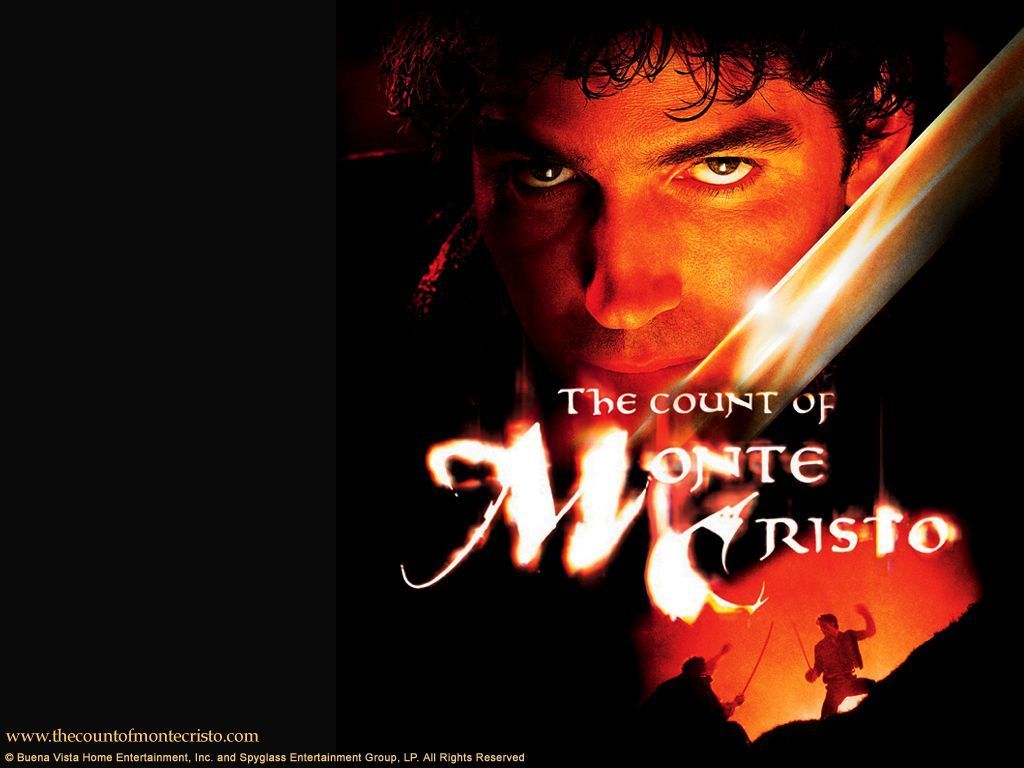The Count Of Monte Cristo: A Critical Review Of The Classic Novel

Table of Contents
A Masterpiece of Revenge and Justice
The Alluring Power of Edmond Dantès's Revenge
Edmond Dantès's quest for vengeance forms the emotional core of The Count of Monte Cristo. His meticulous planning, from acquiring knowledge and wealth on the island of Monte Cristo to strategically manipulating those who wronged him, is a captivating spectacle. However, the novel compels us to examine the morality of his actions. Is his revenge truly justice, or does it consume him, transforming him into something akin to his betrayers?
- Meticulous Planning: Dantès's transformation from a naive sailor to a cunning mastermind is a testament to his resourcefulness and intellect. His calculated steps, each designed to exact a precise punishment, showcase his dedication to his cause.
- Emotional Toll: The years of imprisonment and the subsequent pursuit of vengeance take a heavy toll on Edmond. The novel subtly explores his internal struggles, demonstrating the corrosive nature of hatred and the difficulty of reclaiming one's humanity after such profound trauma.
- Justice or Vengeance?: The novel leaves the reader questioning the true nature of justice. While Dantès punishes those who wronged him, his actions often have far-reaching and devastating consequences, blurring the lines between justice and revenge. The ethical implications of his methods remain a source of ongoing debate.
The Exploration of Betrayal and Forgiveness
The relationships in The Count of Monte Cristo are complex and pivotal to the narrative. Edmond's betrayal at the hands of Fernand Mondego, Danglars, and Villefort drives the plot, shaping his transformation and fueling his quest for retribution. However, the novel also explores the possibility of forgiveness, albeit often indirectly.
- Fernand Mondego's Downfall: Fernand's ambition and betrayal lead to his ultimate ruin, a consequence of his own actions and Edmond's carefully orchestrated revenge.
- Danglars's Calculated Ruin: Danglars, driven by greed and avarice, faces a similar fate, his wealth and influence crumbling under the weight of Edmond's machinations.
- Villefort's Moral Dilemma: Villefort, burdened by guilt and fear, grapples with the consequences of his past actions. The novel leaves his ultimate fate open to interpretation, hinting at the possibility of self-imposed punishment.
- Mercédès's Loyalty and Heartbreak: Mercédès's unwavering love for Edmond, despite his transformation and actions, underscores the novel's exploration of enduring loyalty and the complexities of forgiveness.
Intricate Plot and Vivid Characters
The Complexity of the Narrative
Dumas masterfully crafts a complex and engrossing narrative. The Count of Monte Cristo boasts multiple intertwined storylines, shifting between different locations and social circles. The pacing is expertly managed, keeping the reader engaged throughout the novel's considerable length.
- Multiple Storylines: The narrative seamlessly weaves together Edmond's revenge, the intertwined fates of his betrayers, and several romantic subplots.
- Island Setting: The island of Monte Cristo serves as a symbolic backdrop, representing both escape and transformation. It is where Edmond acquires the knowledge and resources necessary for his plan.
- Social Circles: The novel depicts Parisian high society, the criminal underworld, and various other social strata, painting a vivid picture of 19th-century France.
Memorable and Multifaceted Characters
The characters in The Count of Monte Cristo are richly drawn and deeply flawed. They are not simply good or evil, but complex individuals driven by their own ambitions, desires, and vulnerabilities.
- Edmond Dantès's Transformation: Edmond's journey from an innocent young man to a vengeful Count is a compelling transformation, showcasing the impact of betrayal and the complexities of human nature.
- Fernand Mondego's Ambition: Fernand's ambition and jealousy drive his actions, revealing the corrupting influence of greed and social climbing.
- Other Notable Characters: The novel features many other memorable characters, each contributing to the richness and complexity of the narrative, including Haydée, Albert Mondego, and the Abbé Faria.
Themes of Wealth, Power, and Social Injustice
The Corrupting Influence of Wealth and Power
The Count of Monte Cristo explores the corrupting influence of wealth and power through its characters and the societal structures they inhabit. The pursuit of wealth and influence often leads to betrayal, injustice, and moral decay.
- Consequences of Unchecked Ambition: The novel demonstrates how unchecked ambition can lead to moral compromise and ultimately, self-destruction. Fernand's actions exemplify the dangers of pursuing power at any cost.
- Abuse of Power: Villefort's abuse of his position within the justice system reveals the flaws in the societal structures of 19th-century France and the vulnerability of the innocent to the machinations of the powerful.
- Social Inequalities: The novel highlights the stark social inequalities of the era, demonstrating how wealth and power were concentrated in the hands of a privileged few, often at the expense of the marginalized.
Social Commentary and Historical Context
The Count of Monte Cristo transcends its historical setting, offering a timeless social commentary on class structures, justice, and political corruption. Its themes of betrayal, revenge, and redemption continue to resonate with modern audiences.
- Critique of the Justice System: The novel serves as a critique of the judicial system, exposing its flaws and vulnerabilities to manipulation and corruption.
- Class Structures: Dumas subtly examines the rigid class structures of 19th-century France, illustrating the power dynamics and social inequalities that prevailed.
- Political Corruption: The novel offers insight into the corrupt practices and political maneuvering of the time.
A Lasting Legacy of The Count of Monte Cristo
The Count of Monte Cristo remains a powerful and enduring work of literature. Its intricate plot, memorable characters, and timeless themes of revenge, justice, and social commentary continue to captivate readers. While some may criticize its length or melodramatic elements, the novel's exploration of human nature and the enduring power of its story outweigh its perceived flaws. It is a testament to the skill of Alexandre Dumas and a powerful exploration of the human condition. Have you read The Count of Monte Cristo? Share your thoughts on this classic tale of revenge and redemption in the comments below!

Featured Posts
-
 Ufc 210 Cormier Vs Johnson Ii Predictions And Betting Odds
May 05, 2025
Ufc 210 Cormier Vs Johnson Ii Predictions And Betting Odds
May 05, 2025 -
 One Word Canelo Alvarezs Opinion On Jake Paul And Rivals
May 05, 2025
One Word Canelo Alvarezs Opinion On Jake Paul And Rivals
May 05, 2025 -
 The Colonial Arrogance Faced By Mayotte Rokhaya Diallos Perspective
May 05, 2025
The Colonial Arrogance Faced By Mayotte Rokhaya Diallos Perspective
May 05, 2025 -
 After Opting Out How Google Uses Web Content For Ai
May 05, 2025
After Opting Out How Google Uses Web Content For Ai
May 05, 2025 -
 May 3rd Bakole Vs Ajagba Heavyweight Fight Joins Canelo Alvarez Event
May 05, 2025
May 3rd Bakole Vs Ajagba Heavyweight Fight Joins Canelo Alvarez Event
May 05, 2025
Latest Posts
-
 Max Verstappen Speaks Out Fatherhood And Formula 1
May 05, 2025
Max Verstappen Speaks Out Fatherhood And Formula 1
May 05, 2025 -
 Max Verstappens First Interview Since Becoming A Father
May 05, 2025
Max Verstappens First Interview Since Becoming A Father
May 05, 2025 -
 Max Verstappen New Baby Miami Gp Focus
May 05, 2025
Max Verstappen New Baby Miami Gp Focus
May 05, 2025 -
 Kentucky Derby 2024 And Beyond Fords Exclusive Automotive Role
May 05, 2025
Kentucky Derby 2024 And Beyond Fords Exclusive Automotive Role
May 05, 2025 -
 Formula 1 Star Max Verstappen Welcomes Baby Reveals Name
May 05, 2025
Formula 1 Star Max Verstappen Welcomes Baby Reveals Name
May 05, 2025
